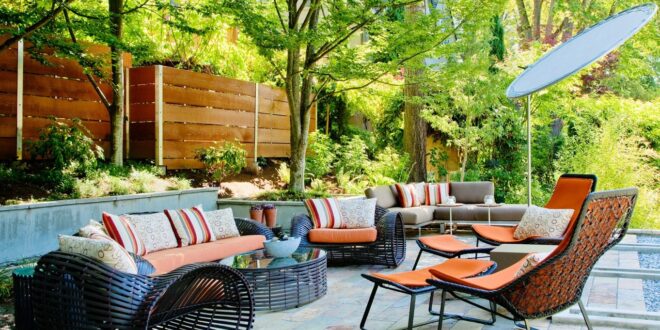Environmental awareness continues to rise as more homeowners embrace sustainability in their personal spaces.
Outdoor projects no longer serve just aesthetic or functional goals but offer a chance to positively impact the planet.
With that mindset, 2025 presents an ideal time to implement eco-friendly outdoor solutions that are practical, attractive, and impactful.
Below are eight actionable projects homeowners can try to reduce their footprint while creating beautiful and purposeful outdoor areas.
1. Convert Your Lawn into a Native Plant Garden
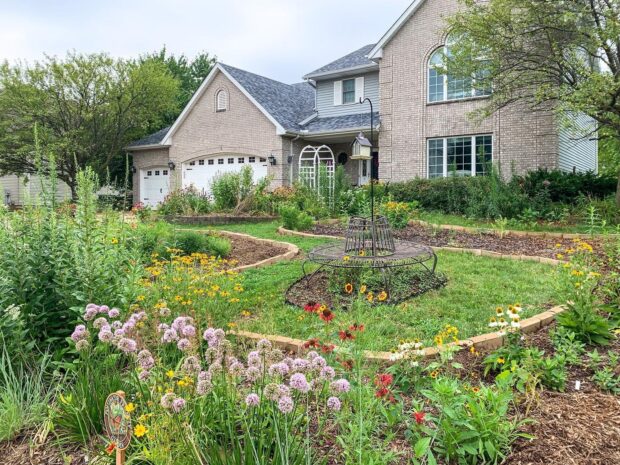
Traditional lawns require constant watering, fertilizing, and mowing, placing unnecessary strain on both homeowners and the environment.
Native plant gardens provide a better option by thriving under natural conditions with little intervention.
These spaces reduce irrigation needs, eliminate chemical use, and support pollinators like bees and butterflies while encouraging local ecosystems to rebound.
Native flora fits regional soil and climate conditions, which means less waste and stronger resilience.
Once established, native plants form a self-sustaining ecosystem that resists pests and tolerates seasonal variations more efficiently than foreign grass types.
To begin, homeowners can evaluate their yard and swap traditional turf for environmentally supportive alternatives. Highlighted benefits include:
- Lower water consumption
- No need for chemical pesticides or synthetic fertilizers
- Habitat creation for birds, butterflies, and bees
- Minimal mowing and maintenance
Start small by introducing native grasses and perennials, then expand by filling open areas with:
- Clusters of wildflowers
- Drought-tolerant ground covers
- Low-maintenance shrubs and bushes
Over time, this transition not only saves money and effort but also brings life and seasonal color into formerly bland outdoor areas.
2. Explore Natural Pools or Wildlife Ponds
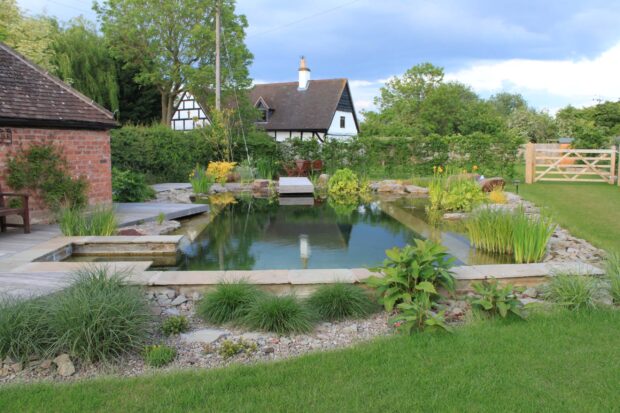
Chlorine-filled pools consume large amounts of water and rely heavily on synthetic chemicals.
Natural pools or wildlife ponds offer a healthier, visually stunning alternative by using aquatic plants and biological filtration to maintain clean water while encouraging life to thrive.
These pools act like self-sustaining wetlands, separated into zones for swimming and for filtration. Water stays clean with minimal intervention thanks to oxygenating plants and gravel.
Water fountains for your pond can improve oxygen levels, keep the water moving, and add visual and auditory interest to the space.
Such features enhance both function and design.
Consider adding elements like:
- Aquatic plants such as water lilies, pickerelweed, and horsetail
- Gravel beds for biological filtration and aesthetic structure
- Water fountains for circulation and oxygenation
- Logs, flat stones, and submerged shelves to attract frogs, insects, and birds
Choose a site with adequate sunlight and good drainage.
With thoughtful planning, natural pools or wildlife ponds become useful and beautiful additions that serve both recreational and ecological purposes.
3. Install a Rain Garden or Terraced Beds for Stormwater Management
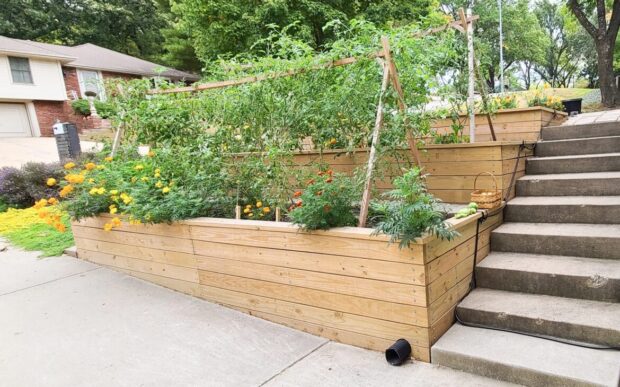
Heavy rainfall often creates runoff that pollutes waterways and washes away topsoil.
A rain garden or terraced bed slows that flow while transforming problem areas into vibrant features.
These elements are ideal for spots where water naturally pools, soaking into the ground instead of flooding paths or foundations.
Rain gardens use natural layers to trap and filter runoff. Terraced beds work especially well on slopes, reducing erosion while creating defined spaces for planting.
Key components include:
- Gravel and sand base for drainage
- Moisture-tolerant plants like native sedges and ferns
- Mulch to retain moisture and suppress weeds
By managing stormwater naturally, outdoor spaces become cleaner, greener, and easier to maintain.
4. Start Composting and Ditch Chemical Fertilizers
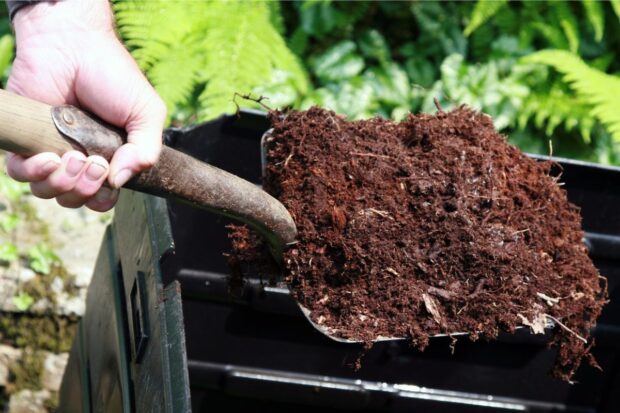
Organic waste can become a solution instead of a burden. Composting turns kitchen scraps and yard waste into nutrient-rich soil amendments that eliminate the need for synthetic fertilizers.
A simple backyard bin or worm composting station keeps the process clean and odor-free.
Compost supports healthy plant growth by enhancing soil structure, improving water retention, and stimulating beneficial microbial life.
Results appear quickly, especially in vegetable beds and flower borders.
Steps to get started:
- Choose a shaded location with drainage
- Combine “greens” (like food scraps) and “browns” (like leaves and cardboard)
- Stir occasionally and monitor moisture levels
Over time, the mixture turns into dark, crumbly compost that boosts plant health while cutting household waste in half.
5. Set Up a Rainwater Harvesting System
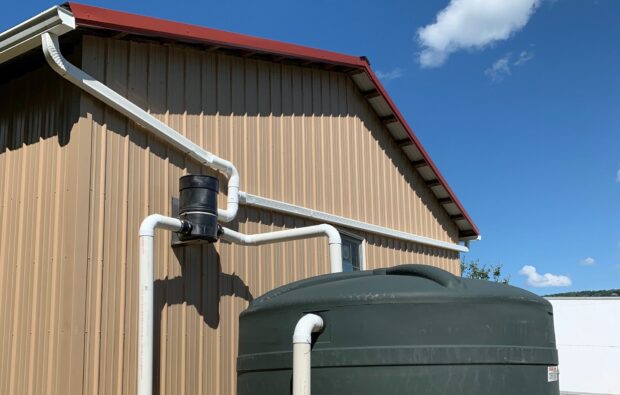
Municipal water use can be expensive and unsustainable during dry spells.
A rainwater harvesting setup captures water from rooftops for use in gardens, lawns, or outdoor cleaning.
Barrels or cisterns connected to downspouts store runoff efficiently without taking up much space.
Collected rainwater lowers water bills and reduces reliance on irrigation systems. It also cuts down on stormwater drainage issues.
Installation tips:
- Place barrels under existing gutters
- Use mesh screens to filter debris
- Add spigots for easy access or connect to drip irrigation
With each rainfall, a full barrel provides clean water for outdoor needs, helping conserve resources without sacrificing function.
6. Build an Urban Food Garden or Herb Planters
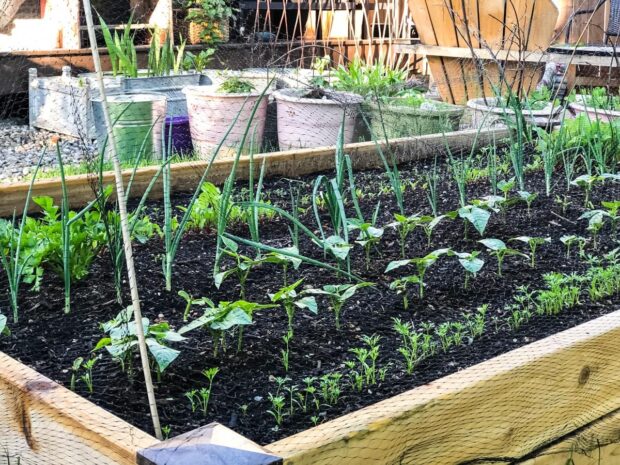
Growing food at home can be easy and rewarding, especially in urban environments with limited yard space.
Small setups using containers or recycled materials can produce herbs, vegetables, and even fruit without needing a large plot of land.
Perfect for patios, balconies, or rooftops, these gardens promote fresh eating and reduce the carbon footprint linked to grocery store produce.
Ideas to consider:
- Vertical gardens made with hanging pockets or shelves
- Raised beds using scrap wood or crates
- Planters made from glass jars, buckets, or reusable plastic bins
Choose easy crops like basil, cherry tomatoes, lettuce, and mint.
Even a few pots can produce consistent yields when watered and composted regularly.
7. Create “No Mow” Zones with Clover, Moss, or Ground Covers
Traditional lawns demand time, water, and fuel to maintain. Replacing parts of a yard with low-maintenance ground covers eliminates mowing and supports pollinators.
These zones require less work and offer more texture and visual contrast.
Clover, moss, and ground covers like creeping thyme create green, walkable surfaces that stay healthy through the seasons.
Benefits include:
- No need for gas-powered mowing
- Reduced irrigation demands
- Natural nitrogen fixing (in the case of clover)
- Habitat for bees and butterflies
Define areas around trees, along fences, or behind sheds as no-mow zones.
These changes save resources and support local ecosystems at the same time.
8. Add Eco-Friendly Outdoor Lighting and Upcycled Furnishings

Outdoor lighting sets the mood, but traditional fixtures often consume energy inefficiently.
Solar-powered or LED lights offer a smart alternative that cuts power usage and limits light pollution.
Warm tones and shielded designs also protect nocturnal animals.
Furniture and accessories can reflect sustainability through reuse and recycling. Discarded items can be turned into useful, stylish outdoor pieces.
Ideas to include:
- Pallet benches or crate planters
- Refinished metal furniture
- Solar stake lights along paths or planters
- Bamboo or composite decking materials
- Permeable pavers for walkways
Sustainable outdoor design doesn’t require compromise, just creativity, repurposing, and a commitment to doing more with less.
Summary
Transforming outdoor spaces starts with simple choices, planting natives, reusing resources, and capturing rain.
Each small project supports a larger goal of reducing impact and nurturing nature. Start where inspiration hits and build on progress gradually.
Community swaps, neighborhood workshops, and online tutorials offer plenty of support. Turn your yard into a living solution in 2025, one that reflects both intention and care.
 Jewel Beat
Jewel Beat
